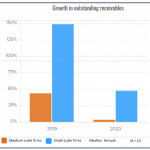Insights from 10 Years of Boosting Gender Inclusion in Business: A Pioneering Social Enterprise Explores How the Sector Can Take the Next Steps
At the beginning of the last decade, we saw businesses and investors as an untapped lever for gender and social inclusion — and for positive change in emerging markets. Back then, gender equality and inclusion efforts were seen mainly as the purview of development organizations. But we saw the potential in leveraging the vast resources of private businesses and investors to advance these goals. In the investing space, specifically, we saw a role for the full range of capital providers and asset allocators, with a focus on venture capital and private equity firms, fund managers, private debt allocators, development finance institutions, philanthropic foundations, and/or institutional investors.
We believed that these private sector players could become a powerful force for change if they had access to simple and actionable solutions tailored to the realities of businesses, finance and the entrepreneurship ecosystems. We also saw that by demonstrating the business case for gender inclusion, we could make it matter to a broader set of private sector organizations. But we understood that in order to do this, we would have to be a kind of organization that, to our knowledge, had never existed before: One that would combine development and gender expertise with business perspectives and know-how, offering hands-on support — while putting business goals first.
In response to this need, in 2012 Value for Women was launched as a social enterprise uniting deep gender expertise with equally deep business and finance experience. Since then, we have provided support to businesses, investors and financial institutions in over 15 countries across five regions, reaching 700 such organizations in the last three years alone. We’ve also seen others take up the mantle of gender inclusion in business and investing over these years, with field-building happening via organizations like GenderSmart (now 2X Global), the Aspen Network of Development Entrepreneurs, the Global Impact Investing Network, 2X Collaborative and others, while standards like the 2X Criteria and the Women’s Empowerment Principles have emerged to provide North Stars for impact-driven investors.
The result is that today, impact-driven investors more clearly see the reasons gender is relevant to business, finance and investment. And there are now terms, like “gender smart,” to help us articulate these concepts. But the biggest sign of this momentum is the reported 3.5x growth in the number of gender lens funds, from 58 in 2017 to 206 in 2021, as tracked by Project Sage.
However, while these gains are important, they are still not enough. In global private markets in 2021, only US $6 billion was raised for gender lens investing — which represented less than half of these funds’ fundraising targets and a tiny percentage of the almost $1.2 trillion raised by private markets globally. Further gains are critical if we hope to achieve gender equality anytime soon: It is currently estimated that it will take 132 years to reach gender parity globally, and accelerating that timeline will require a substantial change in funding.
As Value for Women moves into our second decade, we wanted to take a moment to assess and share what we’ve learned from our first 10 years. Below, we explore some insights that will fuel progress toward gender inclusion in business, finance and investment in emerging markets over the coming years.
Four Lessons from 10 Years of Catalyzing Gender Inclusion in Business
We’ve learned some key lessons from our gender inclusion work over the past decade, including the following:
Lesson One: As the effort to boost gender inclusion in the business, finance and investment sectors continues to grow and evolve, the space has begun to move from a focus on “changing women” to changing institutions. Solutions are no longer exclusively asking women entrepreneurs to become more investible, nor urging women employees to become more recruitable. Rather than seeing women as the problem, more and more solutions recognize that institutions, systems and processes are flawed in the way they invest in and engage women. This has been a key pillar of our work at Value for Women since 2012, and we are seeing the fruit of our efforts to help countless capital providers understand how they can increase capital flows to women, better support women in the workforce, and fund more businesses that provide services or products to women.
Lesson Two: Today, there are more holistic approaches to gender and inclusion in business. Women are still working on an unlevel playing field — and it’s not only women business leaders and entrepreneurs, but also female employees, value chain workers and consumers. To redress this, we’ve pioneered the concept of “gender-forward business practices,” which has influenced the field to look beyond only supporting women-led businesses to also capture missed opportunities to promote gender equality across customers, workforces, value chains, platforms, “gig economy” workers and other areas. This change has required a slow mindset shift, but it has become a powerful positive trend that has only been possible through work undertaken with industry partners who were willing to take risks.
Lesson Three: There is strong and growing evidence demonstrating the business case for including women and a gender focus in business, finance and investment activities, and this is fueling interest — but evidence alone has not always been enough to motivate action. Over the course of 2022, we interviewed over 100 experts, investors, businesses and enterprise intermediaries, reviewed dozens of publications and countless case studies, and reflected on our own work. The majority of experts with whom we spoke agreed: Since simply highlighting the business case — i.e., the expected commercial benefit — for gender inclusion has not always been enough to motivate change, we also need to make this business case relevant and applicable for organizations. We need to focus on small and medium-sized businesses in emerging markets: the key group of businesses for whom gender inclusion hasn’t been explicitly relevant to date. And this information needs to explicitly speak to the importance of including women in a variety of roles — not just women as leaders or entrepreneurs, which is the role this sort of effort has primarily focused on — in order to speak to the businesses that are seeking to engage women in different ways. This will require us to better communicate the business case, and to deliver it hand-in-hand with data on gender inclusion’s positive impact on society.
Lesson Four: Today, a core group of pioneering enterprises, financial intitutions and investors are convinced of the value of gender inclusion, and have moved from asking “why” gender is relevant to business, finance and investment to asking “how” they can integrate gender into their business and investment strategies. As the field has moved forward in all the ways described above, and the growing business case evidence has become more relevant to a wider diversity of players, the increasing acceptance of the value of inclusion among these “early adopters” requires us to go further. This cohort, albeit still small in relation to the broader market, is convinced and thirsty for more, creating a growing demand for guidance on how to integrate gender into business and investment strategies.
We need to provide this guidance — and we need this thirst to grow quicker and more widely among those who remain unconvinced.
Building the Momentum of Gender-Inclusive Business in the Next Decade
Our efforts over the past decade have proven that there is a vibrant cohort of businesses, financial institutions and investors operating in emerging markets, that are seeking practical on-ramps to integrate gender equality considerations into their work. Going forward, the gender-inclusive business sector needs to:
- Keep inclusion at the core: As the private sector moves further into its gender and inclusion journey, it is critical that it learns from the experiences of the development sector, seeing the full diversity of women’s experiences and considering the additional power and identity dynamics at play. Otherwise it is likely that only well-educated, well-resourced white women will benefit.
- Reach more investors, businesses and financial services providers: We are barely at the tip of the iceberg in terms of the number of organizations acting on gender inclusion. We need to make the entry points for newcomers even more accessible. And this will be particularly critical as we become more nuanced and sophisticated with intersectional approaches, because accessible entry points are the gateway to more widespread, and eventually deeper, action.
- Build together: In light of all that lies ahead for our field — including both new opportunities and inevitable challenges — it will take all our brains, hands and hearts to maximize the impact of our combined work. We need field builders to keep the on-ramps accessible, even as the field continues to evolve. We need more brokers — like consultants and other specialists who help businesses navigate the challenges of incorporating more inclusive practices — to make gender and inclusion actionable. We need innovators — and those who fund innovation — to continue finding and supporting what works. And we need to align the work of these various players, to consolidate our shared gains.
As we look toward our next chapter, Value for Women has set the audacious goal of helping to bring new opportunities and better conditions in business, investment and finance to 10 million women over the next 10 years.
To accomplish this, we commit to: going wider, to reach more mainstream audiences; going deeper, ensuring we are tackling inclusion, diversity, equity and intersectionality; going bolder with experimentation and platform building; and going together with our growing group of partners. Because we have seen that practical actions drive systemic change from within, we will continue to design and deploy practical ways for investment, finance and business to advance gender inclusion while creating value, mitigating risk and driving innovation.
If you’d like to read more about these learnings, or if you want guidance for how you can start or expand your own efforts to boost gender inclusion, check out our recently-published Insights series here. You can also subscribe for resources, tips and updates, follow us on LinkedIn, or email us to explore how we can help you achieve your gender inclusion goals.
Rebecca Fries is CEO and Co-founder of Value for Women, and Luis Marquez leads Value for Women’s advisory services.
Photo courtesy of UN Women/Ryan Brown.
- Categories
- Investing, Social Enterprise



